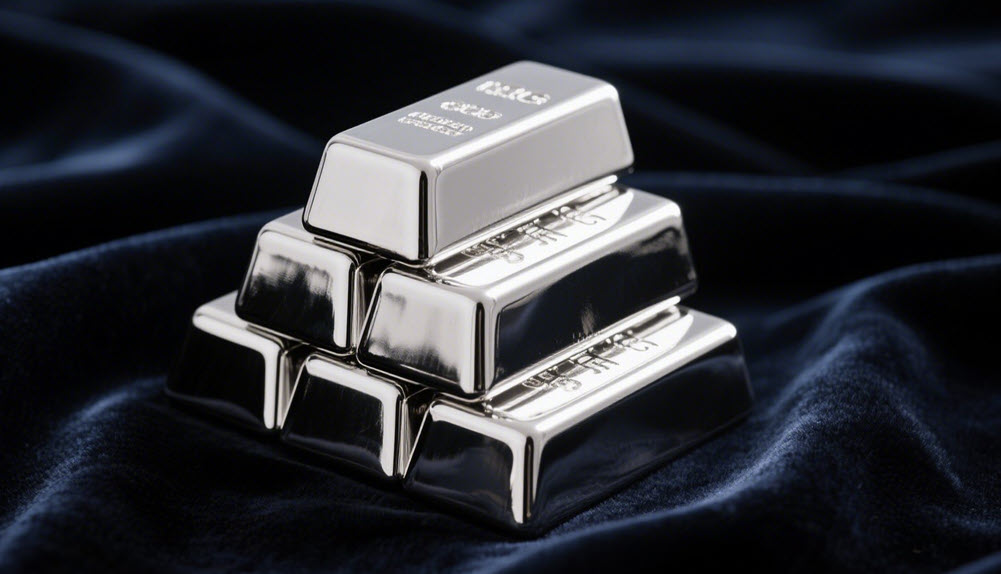Platinum is often overshadowed by gold and silver in the world of precious metals, yet it is one of the rarest and most versatile elements on Earth.
Its scarcity, unique physical properties, and vital role in industrial applications have made it a sought-after material for both investors and manufacturers.
Over the years, platinum has moved in and out of the spotlight, at times commanding higher prices than gold, and at other times trading at a discount.
Understanding its history, market trends, and industrial importance helps explain why platinum remains a distinctive part of the global commodities landscape.
A Rare Metal with an Ancient History
Although platinum was used by pre-Columbian civilizations in South America for ornamental and ceremonial purposes, it wasn’t recognized as a distinct metal by Europeans until the 18th century. Spanish explorers in the 1500s encountered a white metal in Colombia that resisted melting, but it was often dismissed as an impurity in gold and discarded.
By the mid-1700s, scientists identified platinum as a unique element with remarkable resistance to corrosion and heat. Its name comes from the Spanish word “platina,” meaning “little silver,” reflecting its appearance.
Platinum in the Modern Era
Platinum’s rarity sets it apart from many other metals — annual platinum production is far lower than that of gold or silver.
The majority of the world’s supply comes from South Africa, which accounts for around 70% of mined output, followed by Russia and Zimbabwe. This geographic concentration makes platinum particularly sensitive to political events, labor strikes, and supply disruptions in these regions.
Industrial and Technological Uses
While platinum is valued as a precious metal in jewelry and bullion, its primary demand comes from industry. It plays an essential role in:
- Automotive catalytic converters: Platinum is used to reduce harmful emissions in diesel and gasoline engines, making it critical for meeting environmental standards.
- Jewelry: Popular for engagement rings and high-end pieces, platinum’s durability and luster make it a luxury favorite.
- Petrochemical refining: Used as a catalyst in refining crude oil.
- Medical applications: Platinum compounds are used in chemotherapy drugs, and the metal’s biocompatibility makes it ideal for medical implants.
- Electronics and green technologies: Platinum is used in fuel cells and hydrogen production, both of which are gaining attention in renewable energy strategies.
This combination of industrial necessity and luxury appeal means platinum’s market is influenced by both economic growth and consumer trends.
Price Trends and Market Dynamics
Platinum prices have seen dramatic shifts over the past decades. In the early 2000s, prices surged above gold, peaking at over $2,200 per ounce in 2008 amid strong automotive demand and tight supply. The global financial crisis, however, triggered a steep decline.
In recent years, platinum has often traded below gold, partly due to falling diesel car sales in Europe (a major source of catalytic converter demand) and competition from other metals like palladium. Yet, new uses in hydrogen energy technology and a push toward cleaner industrial processes have renewed interest in platinum’s long-term prospects.
Relationship with Other Precious Metals
Platinum belongs to the platinum group metals (PGMs), which also includes palladium, rhodium, ruthenium, iridium, and osmium. These metals share similar properties but differ in scarcity and industrial use. Palladium, for example, has overtaken platinum in price in recent years due to higher demand for gasoline vehicle catalytic converters.
Historically, platinum’s value has often exceeded gold’s, but shifts in technology, demand patterns, and investor sentiment have made the platinum-gold price relationship more volatile.
Investment Options
Platinum can be held in various forms: physical bars and coins, exchange-traded funds (ETFs) backed by physical metal, and shares in mining companies. Futures contracts on commodity exchanges like the NYMEX also offer exposure, though they require a higher level of market expertise.
Unlike gold, platinum’s price is heavily tied to industrial demand, which can make it more sensitive to economic cycles. This industrial connection means platinum may perform differently from traditional “safe haven” assets during market turbulence.
Global Supply and Geopolitical Sensitivity
With most platinum production concentrated in South Africa and Russia, the market is vulnerable to events such as mining strikes, infrastructure challenges, and geopolitical tensions. Even relatively small disruptions can have a significant impact on supply and pricing.
Environmental regulations and technological changes — such as the shift to electric vehicles — can also dramatically reshape demand. While fully electric cars reduce catalytic converter demand, hydrogen fuel cell technology could create a new, substantial source of platinum consumption.
Platinum in Jewelry and Culture
In the luxury market, platinum is prized for its durability, purity, and resistance to tarnish. In Japan and China, platinum jewelry has long been popular for weddings and special occasions. Marketing campaigns in the 20th century positioned platinum as a premium alternative to gold, appealing to buyers who value both elegance and long-term durability.
Why Platinum Remains Important
Platinum’s unique combination of scarcity, industrial importance, and luxury appeal makes it unlike any other precious metal. Its market is smaller and often more volatile than gold or silver, but its role in essential industries — from clean energy to healthcare — ensures it remains relevant.
As technology evolves and the global economy transitions toward greener energy, platinum’s applications may expand, potentially reshaping its demand profile. Whether in an engagement ring, a car’s exhaust system, or a hydrogen fuel cell, platinum continues to bridge the gap between beauty and utility.



